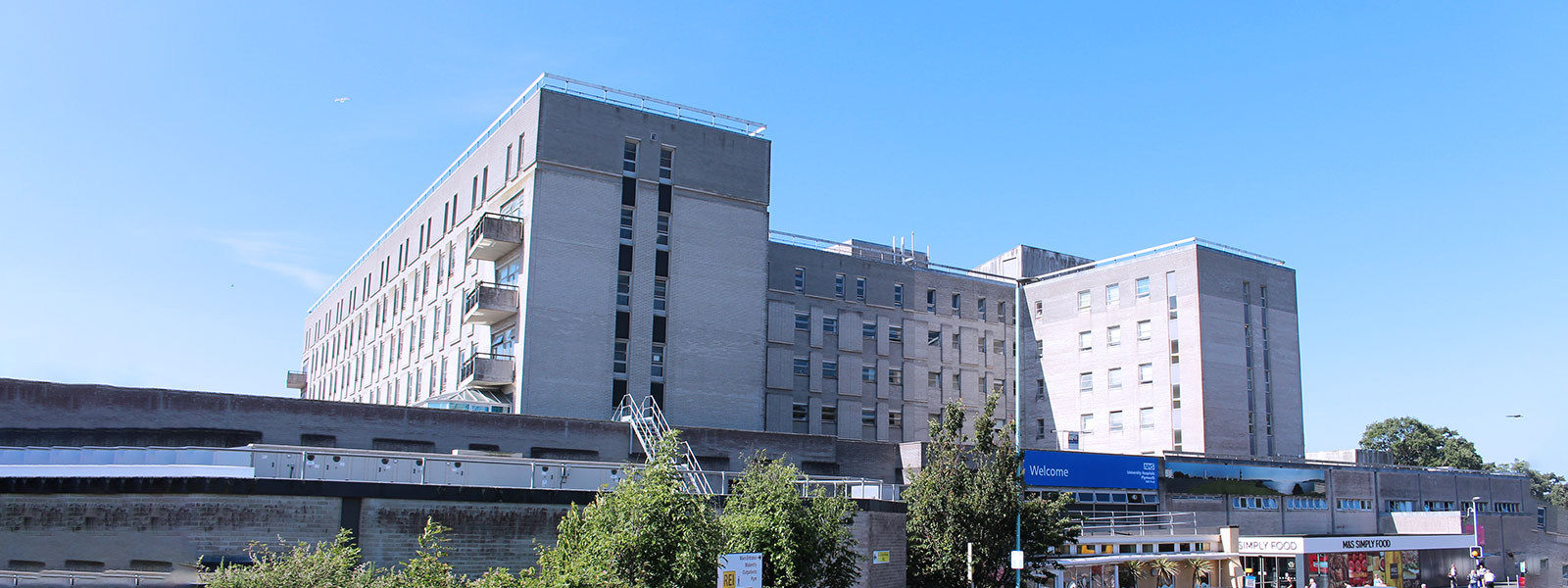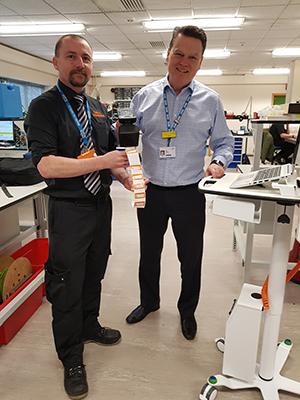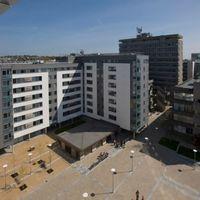Case Study: Plymouth NHS Managing Medical Devices During COVID-19
How Plymouth NHS uses RFID to track devices during the coronavirus pandemic

How RFID helps Plymouth NHS Trust manage medical devices during Covid-19 crisis
After only recently embarking on the implementation of an RFID Discovery system to track 43,000 medical devices, GS1 demonstrator site University Hospitals Plymouth NHS Trust (UHP) is seeing early benefits of the new technology during the current coronavirus crisis.
Equipment from COVID wards has been given priority for tracking and with over one third of their medical devices fitted with GS1 compliant passive RFID labels, the Trust is already noticing a positive impact on the management of equipment in response to the crisis.
Real-time visibility of assets
This is thanks to the high performance of two fixed Impinj xArray readers which have been installed in the medical equipment library (MEL) and in the entrance bay to the Clinical Engineering department, to detect the movement of tagged equipment in and out. Whilst this only represents a small fraction of the planned 92 fixed readers which will form part of the system, UHP has already seen a dramatic benefit of monitoring these two key locations.
The clinical engineering team now has real-time visibility of all devices returned to the decontamination area of the MEL thanks to the RFID Discovery web portal.
Identifying devices from COVID wards
Alex Peters, Clinical Engineering Technician assisting the implementation at UHP comments:
“The system enables us to quickly establish when a device from a COVID suspected ward has been dropped off, and ensure it’s dealt with appropriately. This is in combination with other measures we have put in place, such as different physical drop-off points for the wards depending on their COVID status.
“The system has been hugely beneficial for us by tracking devices as they come and go, enabling us to see whether they are actively in use. Even more crucially we can now see at a glance what is in stock, saving clinical staff a wasted trip to the MEL.”
The ability to check real-time stock via an online portal will also be made available directly to clinical staff enabling them to see equipment availability from the MEL or even neighbouring wards without the need to contact the engineering team.

Key Benefits
- Identifying assets from COVID wards
- Reduced time spent looking for devices
- Real-time visibililty of available devices in the medical equipment library
- Fast auditing of devices
- Easily identifying which devices are actively in use
Coping with constant change
During this difficult time of coping with the virus outbreak, medical device management at UHP has been further complicated by the fact that several ward and department movements have taken place, not just internally but also to external sites, in the effort to keep wards safe and increase ICU capacity from 28 to potentially 110 if required.
As the hardware infrastructure for tracking is not fully in place, the Trust is not yet always able to actively locate a device’s whereabouts once it has left the workshop in real-time. In the meantime, two mobile trolleys and several handheld readers have been used to perform equipment searches across other locations within the Trust.
Steve Puleston, Business Development Manager at UHP explains:
“Mobile scans have had to make up the gap in knowledge until our full infrastructure is in place. During this time of constant change, it was critical to make sure that staff had an additional level of awareness to confirm the location they are auditing, so that the information synced with the database is accurate. But it has been very worthwhile as it’s now much easier to locate devices for tasks such as re-calling and re-deployment.”
With regular sweeps of all departments, data will be enriched by many more ‘last-seen’ locations, making the available information more accurate and helping engineering and clinical staff locate items quickly.
In response to Covid-19, UHP has also had thousands of new devices including ventilators coming in rapidly for commissioning. Every new device is registered onto the database and labelled with an RFID tag, making it ready for tracking immediately.
Other benefits
Finally, the Trust has also seen a number of direct benefits simply due to the audit process of switching to RFID itself.
Steve Puleston added:
“Re-labelling thousands of devices to RFID has been the perfect opportunity to audit our entire database and determine which devices are no longer active due to being misplaced, damaged or decommissioned. In a recent example came we had to quickly establish how many Draeger Delta monitors on our database were available for redeployment if necessary. We were able to instantly establish with confidence that 171 out of a possible 227 monitors recorded on the database were active and available should they be needed.”
Despite all the additional coronavirus challenges, the dedicated clinical engineering team at UHP has managed to get the new system implemented earlier than expected.
Sandie Wills, Scan4Safety Project Manager at UHP comments:
“Initially, we were worried that the implementation of the solution would be slowed down by the current crisis. Instead we have used it as an opportunity to get the system up and running quicker, so we could benefit from it during this challenging time.
The next stage for us is to install the remaining 90 fixed readers in priority areas across the Trust site and put into place a staff awareness and training programme on the use of the Discovery Search engine, so all clinical staff will be able to locate their nearest device."



